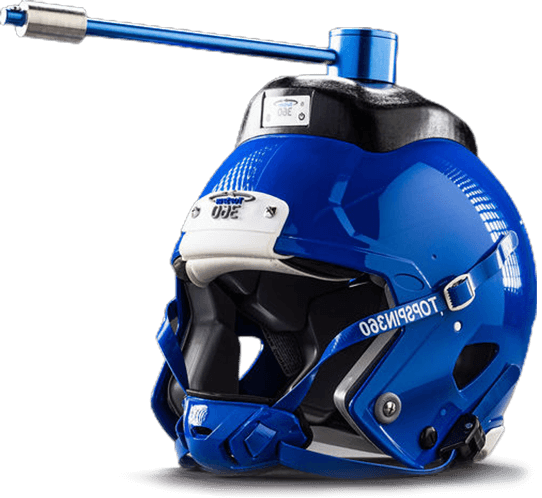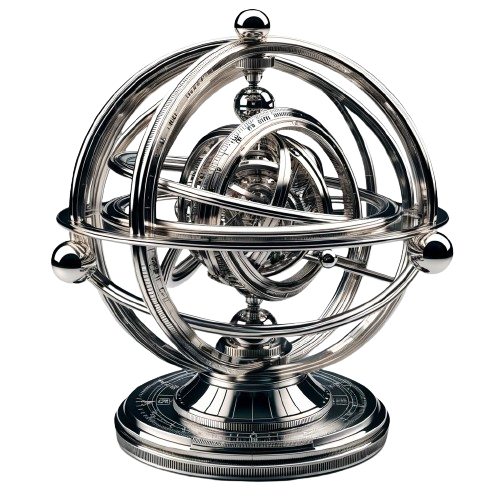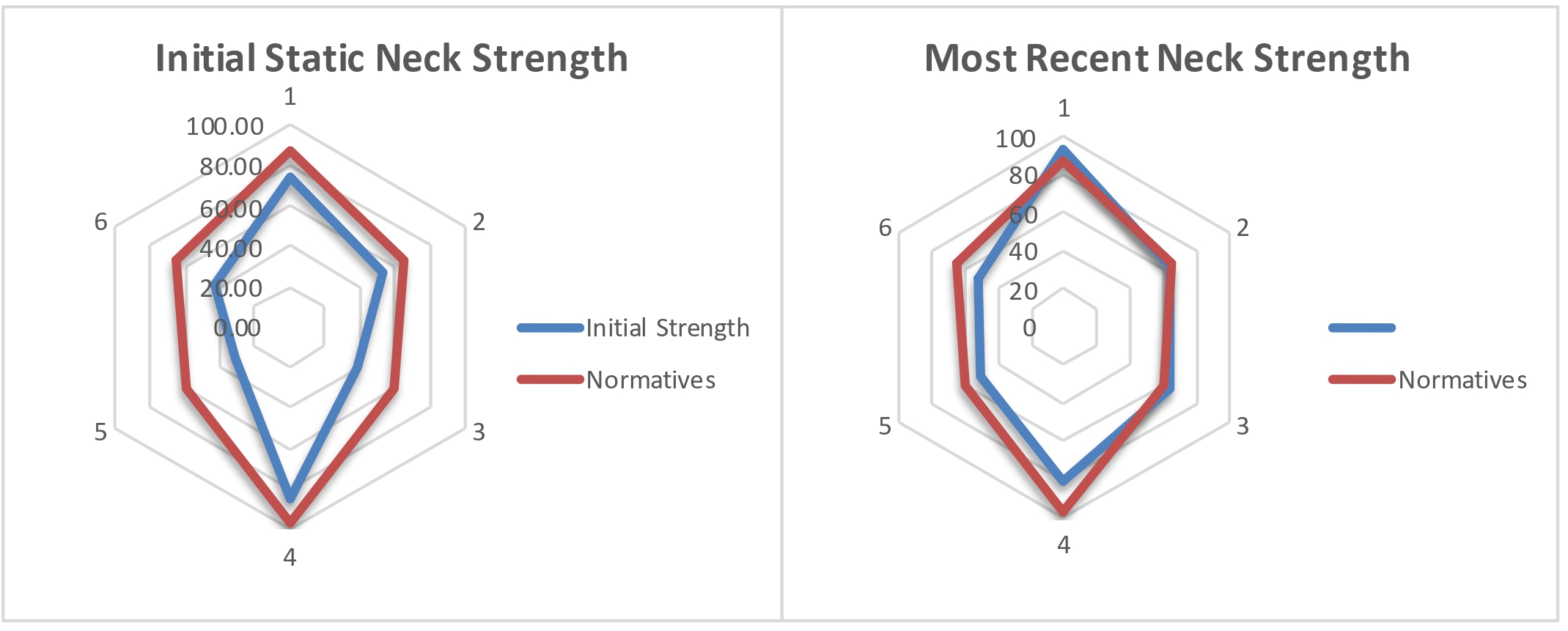Eccentric Capacity of the Neck: A Cornerstone in Concussion Prevention

In the journey of understanding the neck’s role in concussion prevention, we have explored various principles related to neck training. Today, we focus on an aspect of muscular function that doesn’t always get the limelight but is paramount in safeguarding against concussions: the eccentric capacity of the neck muscles.
Types of Contraction

Muscles can perform 3 types of contractions: concentric, isometric, and eccentric, each having distinct characteristics and functions within the body.
Concentric Contractions occur when a muscle shortens as it exerts force. This type of contraction is often associated with the ‘lifting’ or ‘pushing’ phase of an exercise. For example, when performing a bicep curl, the bicep muscle contracts concentrically as it lifts the weight upwards. In the neck, this would be akin to the pushing phase of a 4-way neck machine or Theraband exercises. During concentric contractions, actin-myosin cross bridges are formed and force is generated as these bridges actively pull on parallel muscle fibres.
Isometric Contractions, in contrast, involve no change in muscle length or joint angle. This occurs when a muscle exerts a force equal to that of the opposing force, resulting in a static position. A common example is holding a plank position where the core muscles contract isometrically to maintain the body’s position against gravity. In the neck, isometric contractions are commonly achieved by pushing against static resistance like your hand, or holding a chin tuck as you lift your head off of a bed. In this type of contraction, muscle fibers are activated but do not visibly shorten or lengthen. Isometric exercises are crucial for stabilizing muscles and joints, and improving posture, and are often used in early-stage rehabilitative settings due to the lower risk of injury. However, these contractions are less functional in a dynamic sporting environment.
Eccentric Contractions are characterized by the lengthening of a muscle under tension, often considered as the “lowering” phase of an exercise. In this case, the actin-myosin bridges are broken as they resist the applied force. In other words, eccentric contractions ‘absorb’ force instead of generating it. It is this type of contraction that has the most benefit in reducing the risk of concussion and neck injury. The more force the muscles can absorb, the less force the non-contractile tissues (such as your brain) need to absorb. An example of this type of contraction is when you lower the weight down during a bicep curl, the bicep muscle is undergoing an eccentric contraction. In the neck, eccentric contractions can be achieved through ‘manual neck’ in which a therapist, trainer or strength coach applies an overpowering force to the head forcing the neck to lengthen as it resists the movement. Although effective at training the neck eccentrically, it is also arguably the most dangerous because the one applying the force is trying to overpower the other and if the other person fatigues or experiences pain, the one administering the force may not be able to stop quickly enough to avoid potential injury.
Why can’t you just train concentrically to improve eccentrically?
Because concentric contractions generate force by creating myosin-actin cross bridges and eccentric contractions absorb force by breaking myosin-actin cross bridges they do not respond to the same training load. Eccentrically most muscles have a roughly 30% increased capacity to absorb force compared to the generation capacity of the same muscle concentrically. This makes sense as it is much easier to lower a heavy weight than it is to lift it up. By only training eccentrically with a weight you can lift concentrically, you are missing this crucial 30% capacity and you do not increase the eccentric capacity at nearly the same rate. This is where eccentric overload training comes in. Lowering a weight that you cannot lift concentrically greatly increases the crucial (risk-reducing) force-absorbing eccentric capacity of the muscle. The obvious example of the need for this type of specific training is in the hamstring. Most professional teams have their athletes do Nordic curls or eccentric overload training to avoid hamstring injuries, as these are all too common and are caused by excessive or uncontrolled eccentric forces. These teams know that you cannot prevent hamstring injuries just by performing hamstring curls!
Why is Eccentric Capacity Important for Concussion Prevention?
Eccentric capacity is critical for concussion prevention because:
1. Dissipation of Impact Forces: As discussed, eccentric contractions absorb force and neck muscle with a higher eccentric capacity can absorb and dissipate more force from sudden impacts. The more force the neck absorbs, the less concussion-causing force the brain needs to absorb.
2. Increased Muscle Endurance: Training the muscles eccentrically increases their endurance, making them less susceptible to fatigue-related injuries.
3. Prevention of Overstretch Injuries: As discussed above with the hamstrings, the equivalent for the neck would be whiplash, where the neck’s eccentric capacity is overpowered leading to a neck injury. Enhancing the neck’s eccentric strength reduces the risk of the muscles being overstretched during rapid movements or impacts.
Conclusion:
The eccentric capacity of the neck, while technical in nature, is a fundamental pillar in the realm of concussion prevention. It’s not just about how hard the muscles can contract, but how well they can control, resist, and absorb external forces. By placing an emphasis on this often overlooked aspect, we can take a significant step forward in our mission of concussion prevention. The challenge is, when it comes to the neck, how to train this aspect safely.
Stay tuned as we dive deeper into the intricacies of neck training, exploring the role of fast-twitch muscle activation and the stretch-shortening cycle in our next article on concussion prevention.
TopSpin360: Pioneering Eccentric Training for the Neck
Eccentric strength, often overshadowed, is brought to the forefront with the TopSpin360. The device’s dynamic nature allows users to harness eccentric motions effectively, offering resistance that challenges and enhances the neck’s eccentric capacity. By facilitating controlled lengthening exercises, TopSpin360 is setting new standards in holistic neck training and concussion prevention.
Follow us
Related Post
The realm of concussion prevention is vast, often focusing on tangible elements …
In the journey of understanding the neck’s role in concussion …
When we talk about concussion prevention, much of the conversation …





